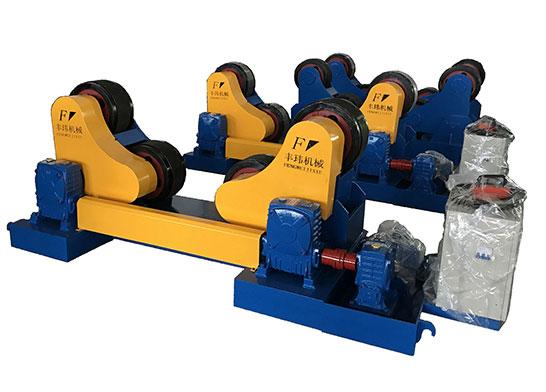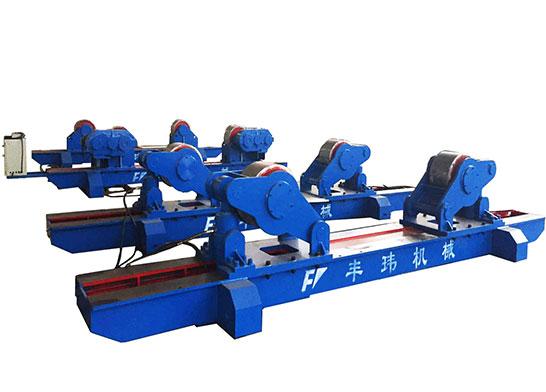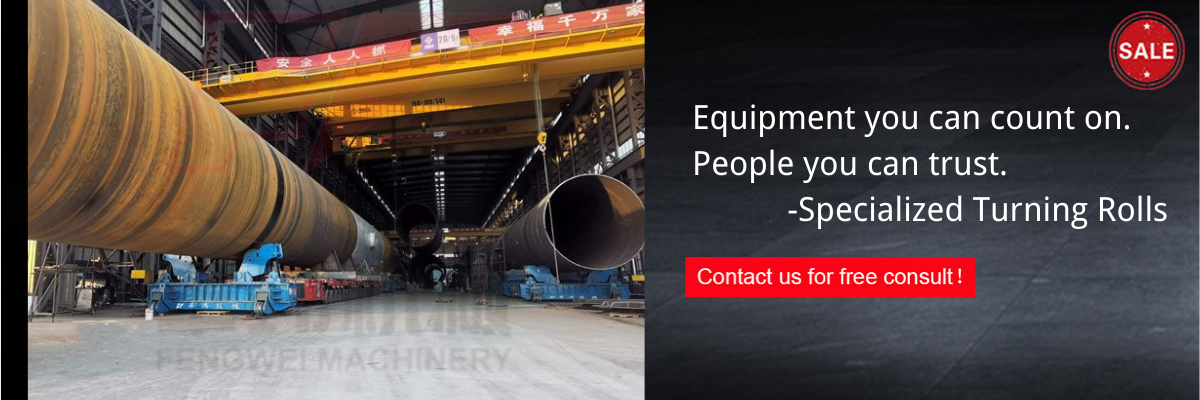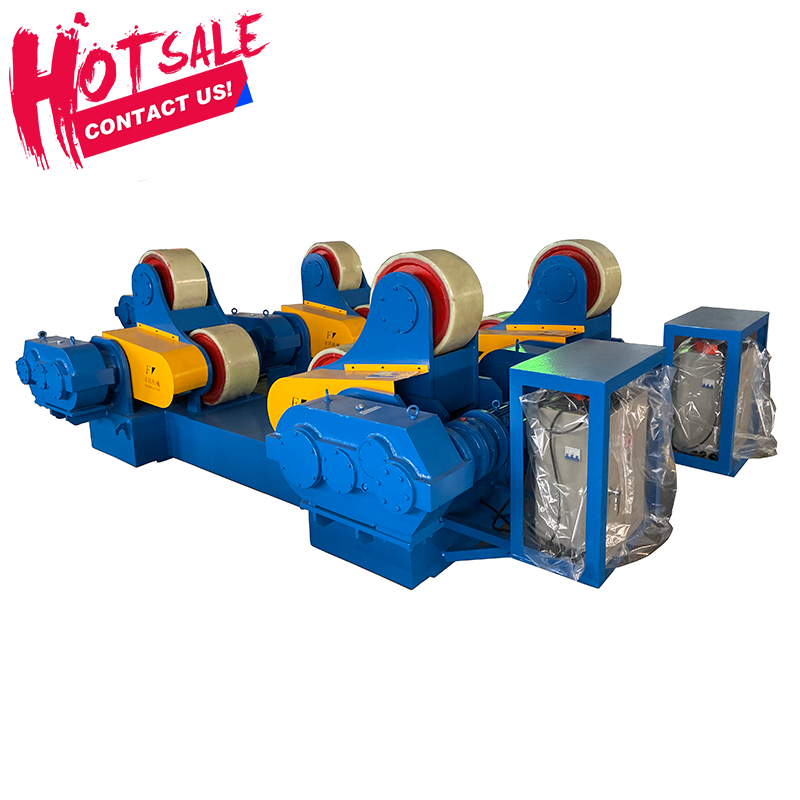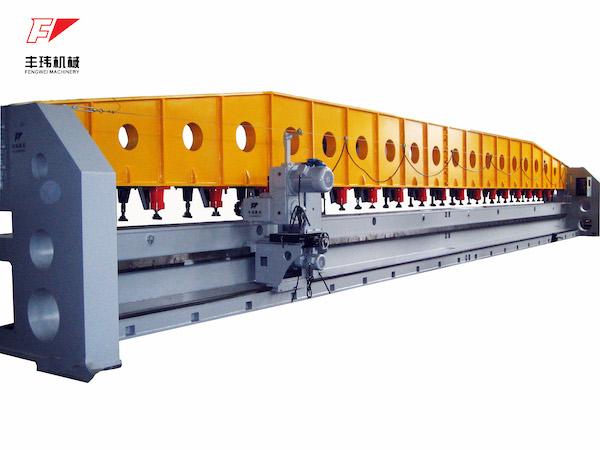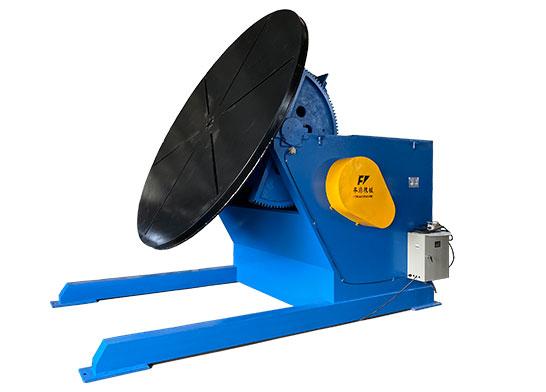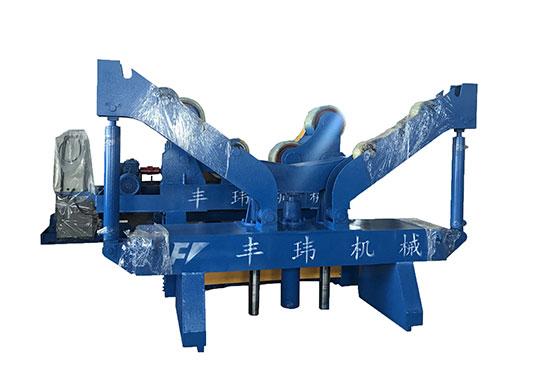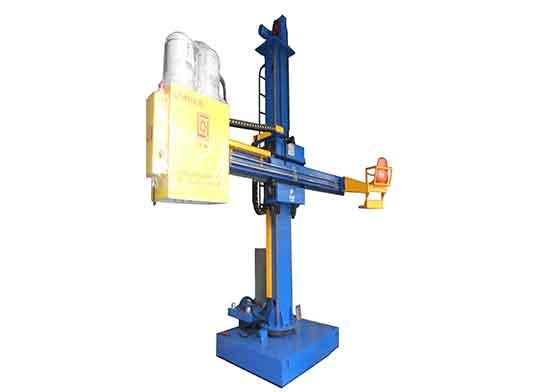It is well-known that positioning equipment can help welders maneuver large assemblies and towel them. Such as:welding rotator.However, many smaller assemblies can also be mechanically positioned to provide the same benefits.
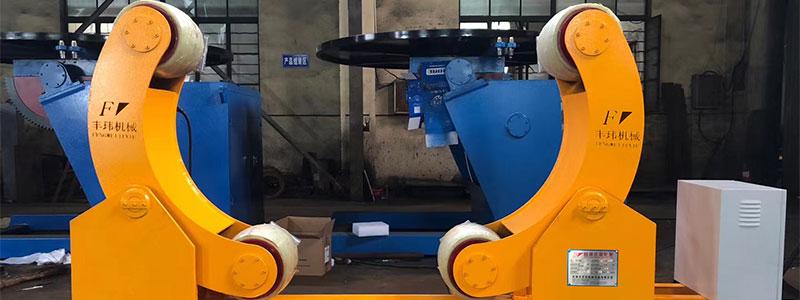
welding rotator workshop
No matter the size of your weldment, the principles of positioning remain the same. The base product must be attached to the positioning device. Once it is in place, the machine will maneuver it using mechanical means to perform the best welding or assembly. To make it easy to access weld joints, parts and subassemblies can be added. Semi-Automatic and manual welding. Operators can be more focused on keeping the weld pool in the joint than worrying about moving around with a torch or an electrode holder. The welding rotator can be used for essential positioning or as a platform to create an entire welding station.
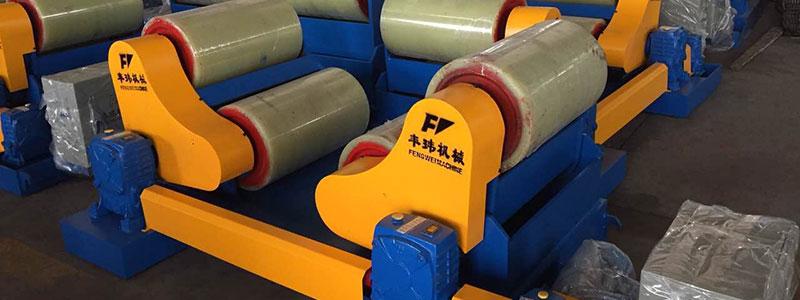
welding rotator warehouse
Reduce clutter and increase productivity
A semiautomatic welder combines a welding rotator, a welding power supply, and a torch stand. It can produce semiautomatic welding that's both productive and ergonomically friendly. The rotator holds the piece and moves it under a stationary torch. The torch can be fitted to a weaving device that allows oscillation to fill significant gaps and V-grooves. The quality of the welding is enhanced by consistent speed and torch position. A communication cable connects the integrated rotator with a welding power supply. An operator needs to signal a starting point by pressing a button or foot pedal. The welding rotator cycle will continue until the signal that it has finished is sent. This method is used for circumferential welds. The final part is removed, and another one is started.
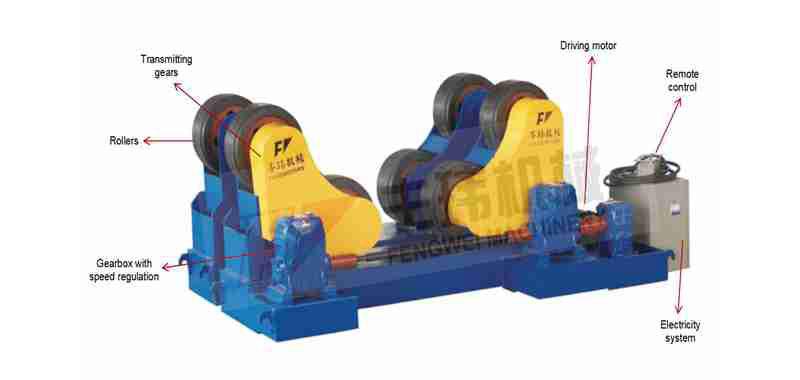
Introduction of welding rotator
Remember the Center of Gravity
When choosing the suitable positioning device, it is necessary to account for not only the weld's weight and size but also its center of gravity (COG), as well as how far from the device. The point at which all axes balance equally is called COG. The manufacturer's specifications for the Conventional welding rotator will guide the choice of motor and control. Welders need to verify that the specifications are correct for horizontal and vertical loading. This will ensure that the weldment is handled correctly. The rotator must be capable of supporting the maximum load.
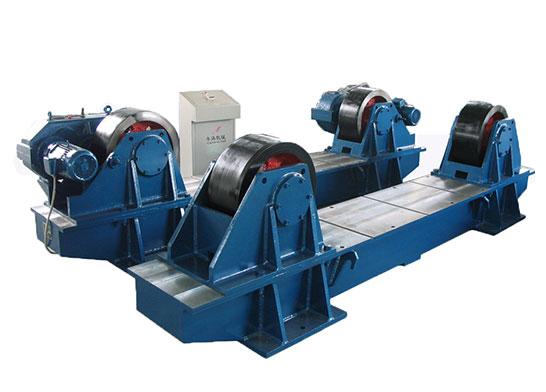 20 Tons conventional turning rollers
20 Tons conventional turning rollers
Use turning rolls to turn cylinders
If the weldment has a cylindrical shape, it can be rolled. A small, either idler or powered turning wheel can rotate a pipe or vessel for down hand welds. The power rolls allow for a steady rotation that produces a uniform circumferential weld. The Idler rolls can be used to support longer pipes and vessels. They are not powered. These can be used to connect pipes or pipe ends and to attach flanges.
Keep welding rotator flat
Even for small positioning equipment, the unit must be mounted to a flat and even surface to prevent tipping. Mounting holes provided for the Conventional welding rotator should be used to fix it to a stable surface. This will prevent it tipping in case of an unexpected force. It is also necessary to secure the rotator when it is mounted on a workbench.
Connect the ground current to the rotator
When welding is done, the ground current must be connected to the rotator. Ground current is transferred from the table into the chassis. This allows you to eliminate the need to replace and remove a welding clamp every so often. Neglecting to ground electrical components can cause damage and lead to substandard welding deposits. The electric current produced during welding must be compatible with any rotator. All ground cables must also be tightly secured, removing any paint before bolting to a carriage.
Ideal Solutions for Automatic Welding Equipment
You might be lucky because modern innovators have developed automated machines that rotate either pipes or tanks during welding or other finishing operations. No matter how small your company is or how big your workshop is, know that productivity is key to survival in the global competitive market.
Are you looking for your Automatic Welding Machinery?
Now that you can see how a simple-looking welding rotator/turning roll can increase efficiency in your welding plant, it is essential to remember that not all equipment is created equal. Here are some factors to keep in mind when searching for these appliances:
International Certification: Only the best heavy-duty machinery needs to be certified. CE-approval is the essential product certification on this market. It is important to ensure that the products you buy have CE approval.
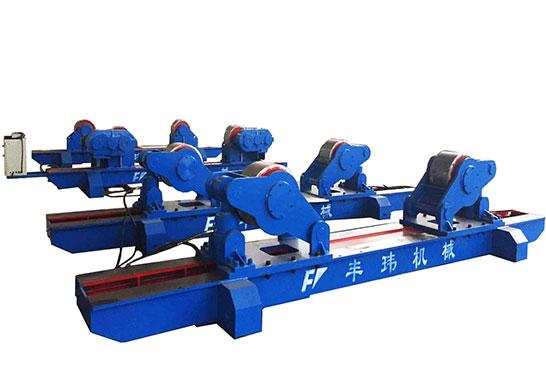
Pipe Fit Up Turning Rolls
Reputation: You want to buy equipment made by an innovative company and have the expertise to make it last. Also, confirm with the manufacturer to visit their factory to inspect the automated rotator and turning roll before shipment. You can expect a trustworthy company to welcome you. However, if they are unwilling to do so, you should search for another supplier. For automatic machinery, it is vital to have post-sales service. You should ensure that your supplier can offer a warranty on all products you buy.
Customization: You should find a supplier that can design turning rolls and rotators to your specifications.
Check out the shipment policy and lead-time: A reliable company will offer a favorable shipment policy, along with a reasonable lead period, to ensure the machines are available for you as soon as possible.
Safety is an essential aspect of being a welder. No matter the method you use, safety should be the number one concern. Even if safety is not your primary concern for a while, accidents can still happen. Safety is vital in welding. It would help if you were protected against heat, poisonous fumes, fire, and shock. If you don't have the proper equipment, there is a high chance of personal injury.
Fire safety: When Conventional welding rotator, fire is a severe hazard. Before torch cutting and welding, it is important to inspect the area you are working in for potential combustibles. Move any combustibles within 35 feet of where you'll be working. It would help if you always had a fire extinguisher handy.
Chemical Safety: You need to ensure that any items you torch-cut or weld have no flammable or explosive materials, acid or tar, or grease.
Personal Protection: Because the welding emits ultraviolet light, you must wear safety glasses, goggles, helmets. You should permanently remove the hood before you start welding. This will prevent the common injury of welding flash. When welding takes place, fumes such as nitrogen oxide or carbon monoxide can be produced. Protect yourself against these and metals like copper, vanadium, and zinc, as well as fluoride and cadmium.Pipe turning rolls can be used to precisely position and roll applications in welding, such as wind towers or oil pipes. They can be made to fit the individual needs of the customer and are therefore customizable. The rolls can be customized by adding track mount wheels or other accessories. Several speed-powered rotations allow you to rotate quickly or slowly, depending on what you're doing. You can choose from Micarta, Steel, or Rubber wheels.
It would help if you were skilled in welding. It is essential to combine precision and speed with quality. A machine will help you do this. The system's positioning is critical, and pipe turning rolls are required for both light and heavy applications in welding. They can be used in place of manual techniques to improve productivity and safety. Before you begin your next job in welding, make sure to consider these safety tips.
 русский язык
русский язык

 EN
EN